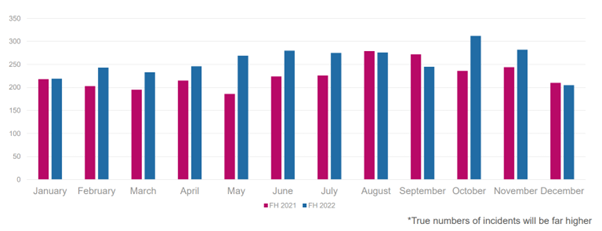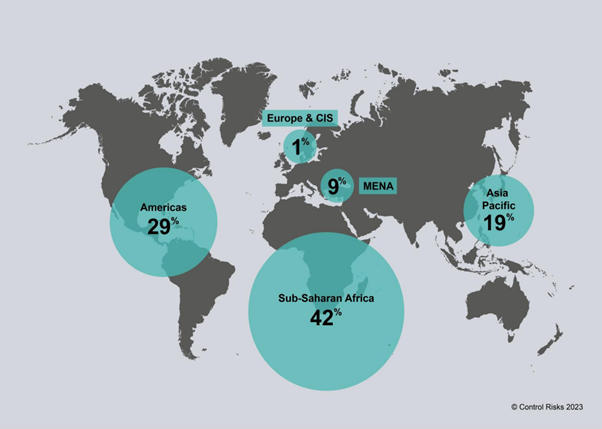Driven by growing demand, the mining sector is expected to expand sharply in the next years. The fact that a lot of the activity will take place in developing countries in conjunction with an economic slowdown and high inflation is set to fuel the kidnap for ransom risk exposure of businesses in the sector.
The global population reached 8.0 billion in mid-November 2022, and is expected to hit 8.5 billion in 2030 and 9.7 billion in 2050 according to projections by the United Nations (UN) (opens a new window). With a growing population comes an expanding demand for the metals and minerals that underpin societal progress. From civil infrastructure to transportation, and technology to agriculture, the products that the mining and metals sector produces support and enable virtually every sector globally.
Growing demand
As a result, the world consumption of raw materials is set to nearly double (opens a new window) by 2060. Consequently, the global mining market is expected to grow by 82% between 2021 (USD1,843.33 billion) and 2026 (USD3,358.82 billion), according to the Mining Global Market Report 2022 (opens a new window) by ReportLinker.
A big share of the global mining activity takes place in developing countries, particularly China, Russia, Chile, Indonesia, and South Africa, where the wealth inequality tends to be higher than in developed countries and socioeconomic issues are widespread.
Rising risk
Kidnap rates globally are already on an upwards trajectory, not helped by the recent economic downturn and price inflation. While the latter has started to show signs of easing, it remains high in most geographies and disproportionately hurts low-income households as they spend a higher proportion of their total income on essentials such as food, electricity, gas and heating. Low-income households also tend to save less and are more subject to liquidity constraints. In addition, the pandemic has particularly impacted lower paid jobs that rely on manual labour and many governments in developing countries failed to introduce appropriate financial support measures to compensate for the income fallout.
Kidnaps-for-ransom, number of incidents recorded worldwide, 2021 vs 2022*

Source: Control Risks
Sub-Saharan Africa remains a dynamic kidnapping environment with various hotspots across the continent, including Nigeria, South Africa, Congo (DRC), the Sahel, Mali, Niger, Burkina Faso and Mozambique.
Kidnaps by region in 2022

Source: Control Risks
Mining as a sector is a particular target given the perception of wealth surrounding the industry and therefore its perceived ability to pay elevated ransom sums. While expats working on sites in Africa are an especially high target for the same wealth perception, businesses should not forget about their duty of care to local nationals employed on mine sites. The outdoor nature of mining sites makes it comparatively easier for would-be kidnappers to pre-plan by monitoring operations, guard shift patterns and victim routines. Also, while the majority of kidnaps recorded in Africa are usually concluding within one week, kidnaps of mining personnel have tended to be longer in duration, often lasting for multiple weeks and, in higher-risk locations, can last for several months, according to Control Risks.
Protecting staff
Kidnap for ransom insurance policies can help companies to protect their workers, both expats and local nationals, from the risks of kidnap. The policy allows companies to access specialised response consultants who can help the process of ransom negotiation and the safe return of individuals. The policies have a focus on pre-incident mitigation with premium bursaries available to put towards training and best practice principles for operating in high-risk territories. This allows companies to put in place practices which support their duty of care obligations to their employees. The insurance policies indemnity aspect allows companies the peace of mind that they can support their staff in a crisis without worrying about the resulting financial burden on the company.
The threat to expat miners is likely to remain high in the long term given the socioeconomic dynamics, which enable acts of crime and kidnap to persist, and which are showing little signs of abating. Moreover, mining as a sector maintains its perception of wealth with the associated higher risk of targeting for kidnap which goes with that.
For further information, please contact:
Helen Sandford – Assistant Vice President, Crisis Management, Special Contingency, Active Assailant
T: +44 (0)20 7933 2346
